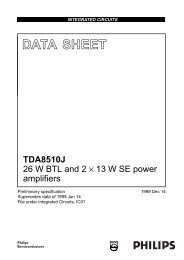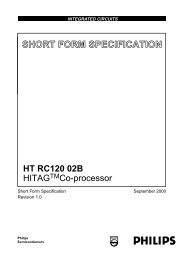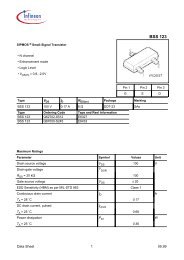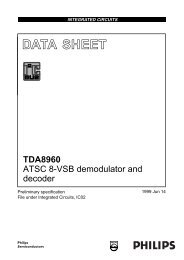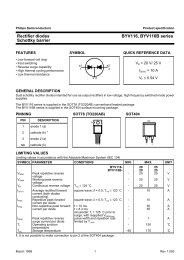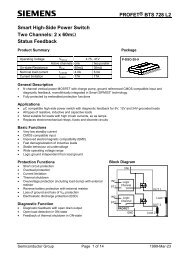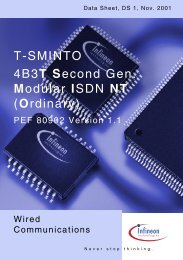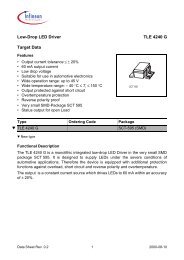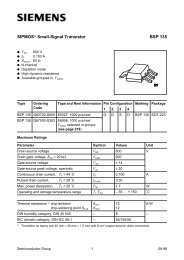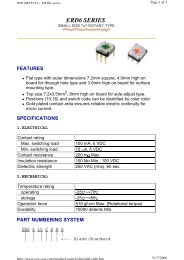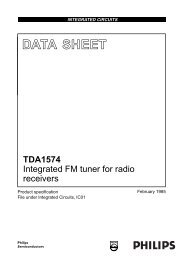Atmel ATMEGA128A-AU datasheet - Octopart
Atmel ATMEGA128A-AU datasheet - Octopart
Atmel ATMEGA128A-AU datasheet - Octopart
You also want an ePaper? Increase the reach of your titles
YUMPU automatically turns print PDFs into web optimized ePapers that Google loves.
ATmega128A<br />
9. Errata<br />
The revision letter in this section refers to the revision of the ATmega128A device.<br />
9.1 ATmega128A Rev. U<br />
• Wrong value for Version in the JTAG Device Identification Register<br />
• First Analog Comparator conversion may be delayed<br />
• Interrupts may be lost when writing the timer registers in the asynchronous timer<br />
• Stabilizing time needed when changing XDIV Register<br />
• Stabilizing time needed when changing OSCCAL Register<br />
• IDCODE masks data from TDI input<br />
• Reading EEPROM by using ST or STS to set EERE bit triggers unexpected interrupt request<br />
1. First Analog Comparator conversion may be delayed<br />
If the device is powered by a slow rising V CC , the first Analog Comparator conversion will<br />
take longer than expected on some devices.<br />
Problem Fix/Workaround<br />
When the device has been powered or reset, disable then enable the Analog Comparator<br />
before the first conversion.<br />
2. Interrupts may be lost when writing the timer registers in the asynchronous timer<br />
The interrupt will be lost if a timer register that is synchronous timer clock is written when the<br />
asynchronous Timer/Counter register (TCNTx) is 0x00.<br />
Problem Fix/Workaround<br />
Always check that the asynchronous Timer/Counter register neither have the value 0xFF nor<br />
0x00 before writing to the asynchronous Timer Control Register (TCCRx), asynchronous<br />
Timer Counter Register (TCNTx), or asynchronous Output Compare Register (OCRx).<br />
3. Stabilizing time needed when changing XDIV Register<br />
After increasing the source clock frequency more than 2% with settings in the XDIV register,<br />
the device may execute some of the subsequent instructions incorrectly.<br />
Problem Fix / Workaround<br />
The NOP instruction will always be executed correctly also right after a frequency change.<br />
Thus, the next 8 instructions after the change should be NOP instructions. To ensure this,<br />
follow this procedure:<br />
1.Clear the I bit in the SREG Register.<br />
2.Set the new pre-scaling factor in XDIV register.<br />
3.Execute 8 NOP instructions<br />
4.Set the I bit in SREG<br />
This will ensure that all subsequent instructions will execute correctly.<br />
Assembly Code Example:<br />
CLI<br />
OUT XDIV, temp<br />
NOP<br />
NOP<br />
NOP<br />
; clear global interrupt enable<br />
; set new prescale value<br />
; no operation<br />
; no operation<br />
; no operation<br />
8151GS–AVR–07/10<br />
19




